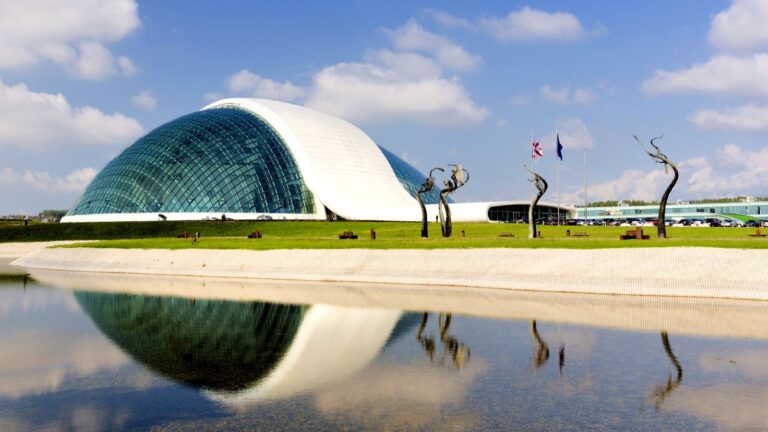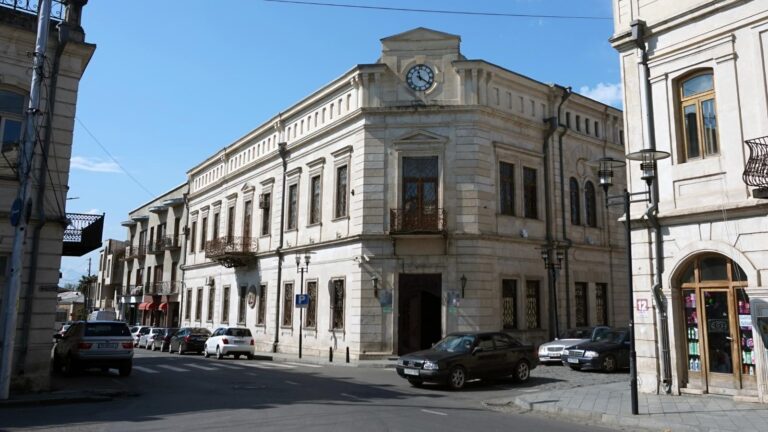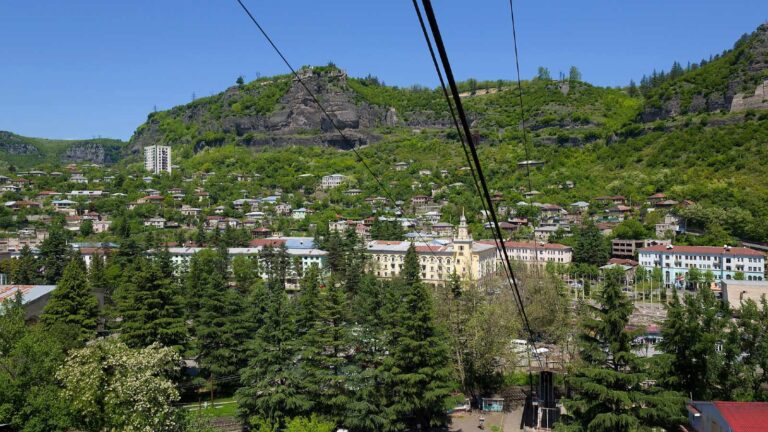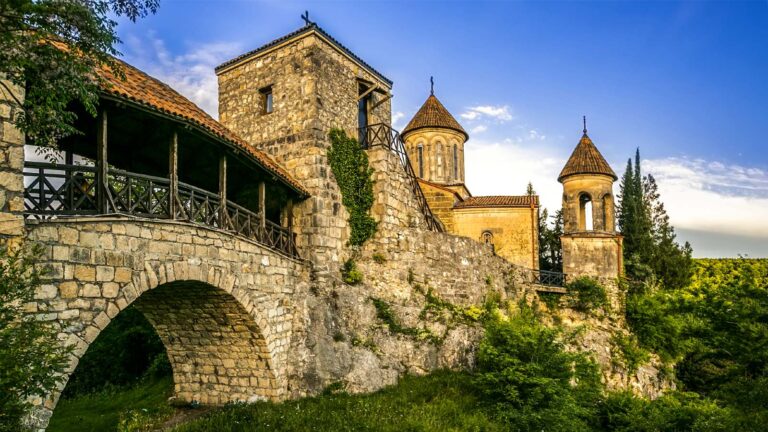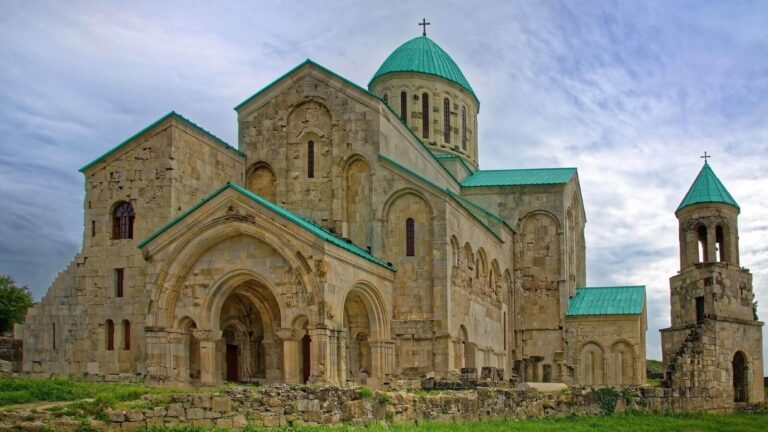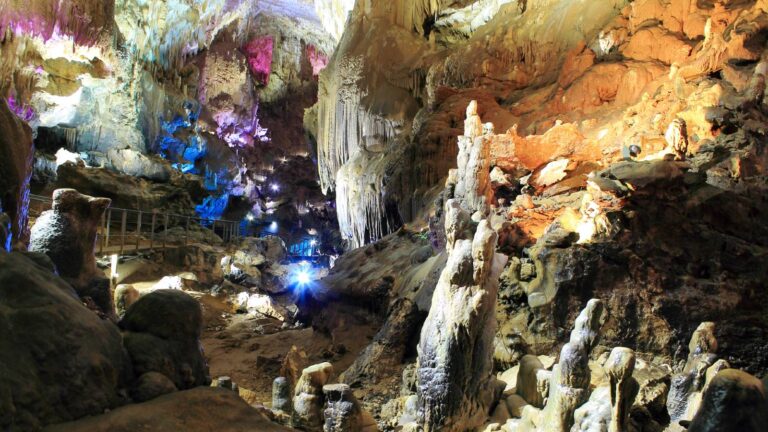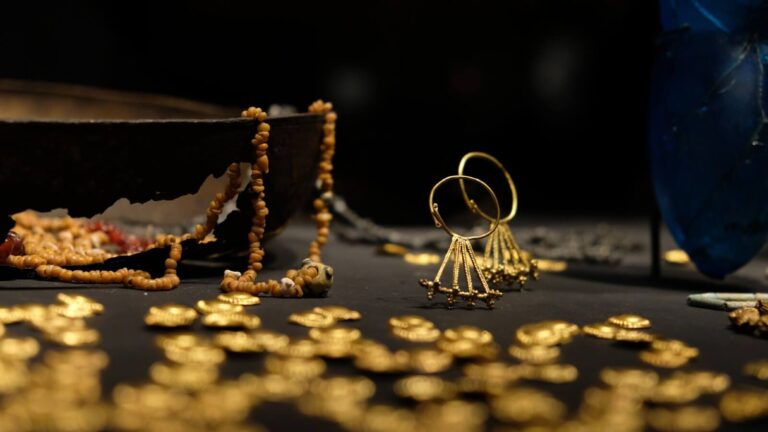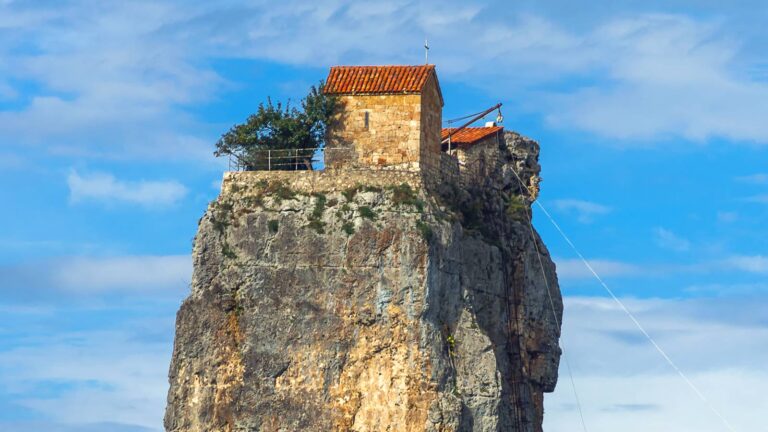Getting There
In order To get to Gelati Monastery, first, you need to get to Kutaisi.
Gelati Monastery is 9 km away from Kutaisi;
There are different types of transport in the direction of Kutaisi: bus, microbus, train and also flights from Tbilisi, Mestia and Ambrolauri to Kutaisi.
Feel free to take a minibus at Didube or Tbilisi central bus stations.
What to Expect
The first bell tower is contemporary with two monasteries, the third – relatively late, built in XIV century. Water is drawn on the first floor. Some Important samples of Georgian monumental painting and mosaic are preserved in Gelati Cathedral.
History
Gelati Monastery was the most significant cultural and educational center. Some important figures include Arsen Ikaltoeli, Arsen Bulmaisimisdze, Petre Gelateli, Evdemon Chkhetidze, Ekvtime Sakvarelidze, and Gedeon Lortkipanidze, and others have worked here at different periods.
King David could not finish the construction of the monastery, so his son Demeter continued the work. In the XII-XV centuries, the Gelati Monastery was granted full autonomy, which meant that it recognized only the supreme right of the king.
On November 23, 1510, it was burned by the Ottoman army invading Imereti. The kings of Imereti Bagrat III and George II restored the Gelati Monastery. Bagrat III was called the “second builder” of Gelati. From the XVIII century, large-scale restoration works were carried out in Gelati Monastery by George VI, Alexander V, Solomon I, Solomon II, and the bishops of Gelati.

